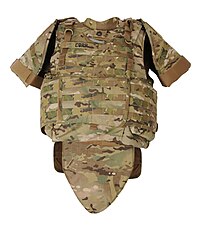
Photo from wikipedia
Abstract High speed friction stir welding (HS-FSW) was introduced as an alternative method to weld ultra-thin aluminium alloy sheets. The effect of the backing plates and post welding artificial aging… Click to show full abstract
Abstract High speed friction stir welding (HS-FSW) was introduced as an alternative method to weld ultra-thin aluminium alloy sheets. The effect of the backing plates and post welding artificial aging (PWAA) on microstructure evolution and mechanical properties of 0.8 mm thick HS-FSW AA6061-T6 joint was subjected to investigation. The sound FSW joints were produced at rotational speed of 8000 rpm and welding speed of 1500 mm/min using backing plates of pure copper (Cu) and steel (Fe) respectively. The microstructure evolution and mechanical properties of the joints were affected significantly by backing plate and PWAA. The nugget zone (NZ) and heat affected zone (HAZ) of the joints produced using Fe was significantly larger than that of the Cu due to higher heat input. However, a clear banded structure in the NZ was formed using Cu backing plate due to lower heat input. In addition to the Mg2Si, the number of Al8Fe2Si and Al2CuMg precipitates in the NZ prepared with Fe was obviously more than that of the Cu. The HS-FSW thermal cycle resulted in a wide softening zone, which further deteriorated mechanical properties. After PWAA, the microhardness and tensile strength of the HS-FSW AA6061-T6 joints were substantially enhanced for both the Fe and Cu backing plate, attributable to increased the precipitates of Mg2Si, Al8Fe2Si and Al2CuMg and the densities of dislocation walls and substructures. A combination of Fe backing plate and PWAA was proven to be the optimal path to improving the mechanical properties of HS-FSW AA6061-T6 ultra-thin sheet joint, with a maximum joint efficiency of 90.3% obtained.
Journal Title: Journal of Manufacturing Processes
Year Published: 2018
Link to full text (if available)
Share on Social Media: Sign Up to like & get
recommendations!